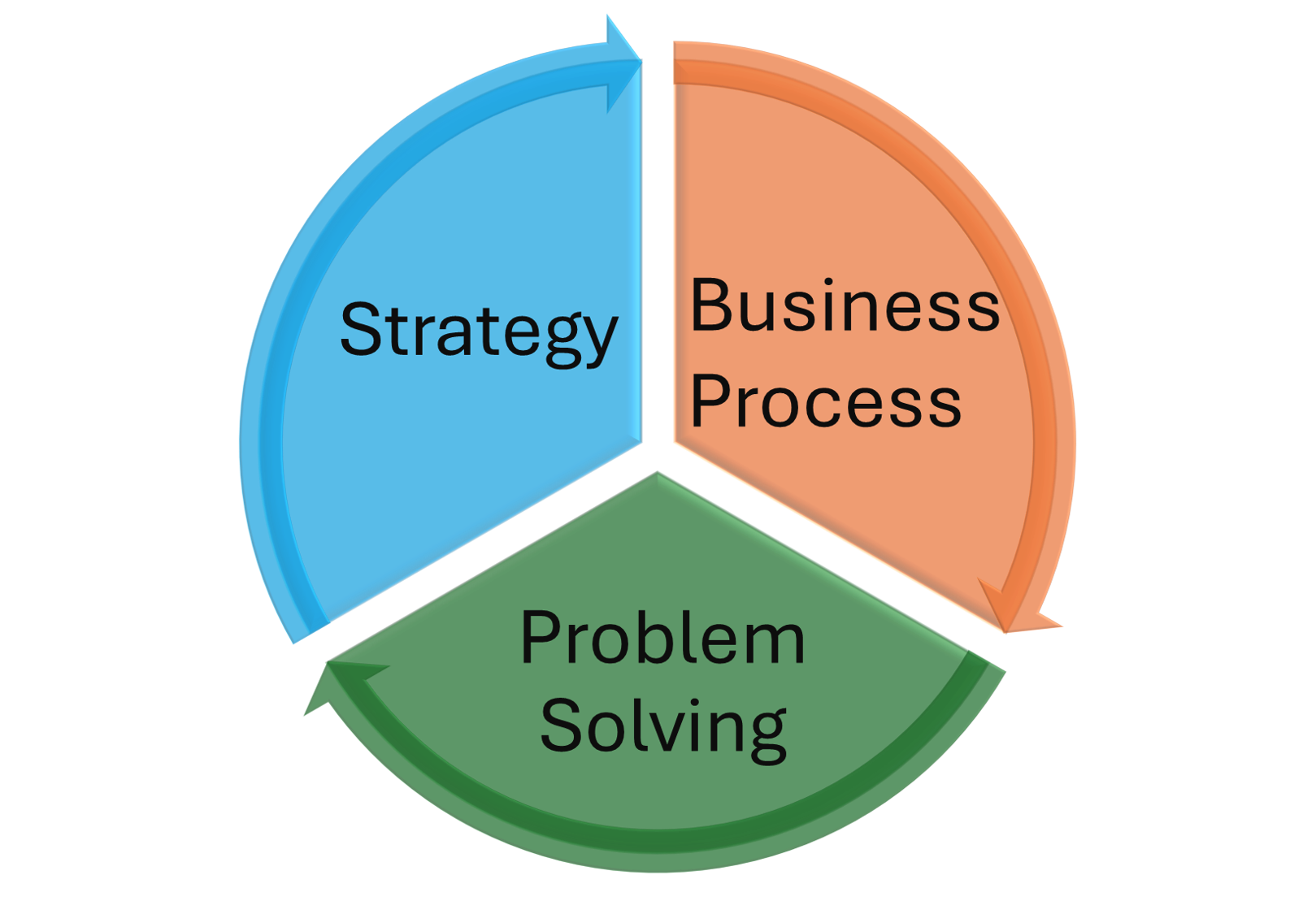CASE STUDY 5.2 – Business Excellence & Key Process Improvement
PROBLEM STATEMENT
A well established company with a high market share had been through many ups and downs over several decades.
The organisation still had a silo mentality. Processes were departmentally driven and the concept of process ownership had yet to be established.
A core process or Value Stream focus for the business had to be developed. The IT backbone and infrastructure had to be updated urgently with a focus on processes rather than departments.
Many years of poor IT investment was frustrating as the demands from the user community could not be fulfilled. Overall priorities were not clear. No Project Management approach was applied to IT / business process projects.
There was insufficient alignment between the business users with the IT application owners.
TASKS and ACTIONS
The Executive team had to get consensus on the need for strategically prioritized Business Process improvement.
The first phase was to get a complete picture per function of the IT environment, applications and processes. This was converted to a rough 5 years development plan for the main processes.
The second phase was to evaluate all the needs from the organisation using strategic filters such as efforts, costs and business benefits. From this the priority list of „must have“ and „essential“ projects for the global organisation was defined.
This project list was prioritized to match the available budget and the chosen projects defined with clear project charters.
Finally, using project management principles, the Team, Team Leader (or Process leader) from the business and an application expert from IT together with a core team were defined for each project.
RESULTS
An essential achievement was getting strong senior executive alignment on top priorities across the business. The baseline project portfolio was selected to meet the allowable IT budget. These projects were managed using project management principles with Executive sponsorship and progress reporting.
A Project coordinator was nominated to monitor and track all the projects.
These projects were reported monthly and were inputs to the Steering committee reviews. Each team leader received basic project management and change management training.
In the first year 75% of the chosen projects were on track and being delivered to plan. This was the first time that the direction and priorities for process / IT improvements were transparent and visible globally.
Each completed project led to an upgrade in the business process and therefore the business process model.

